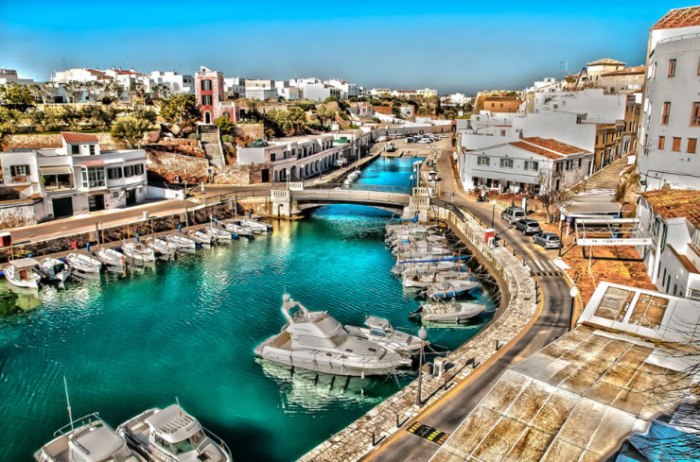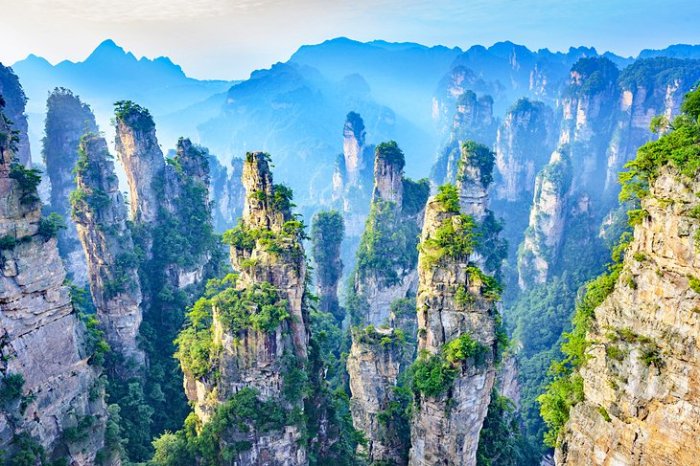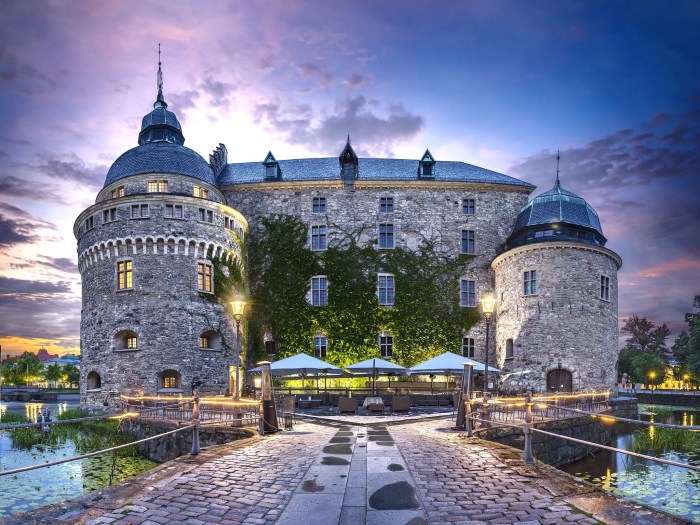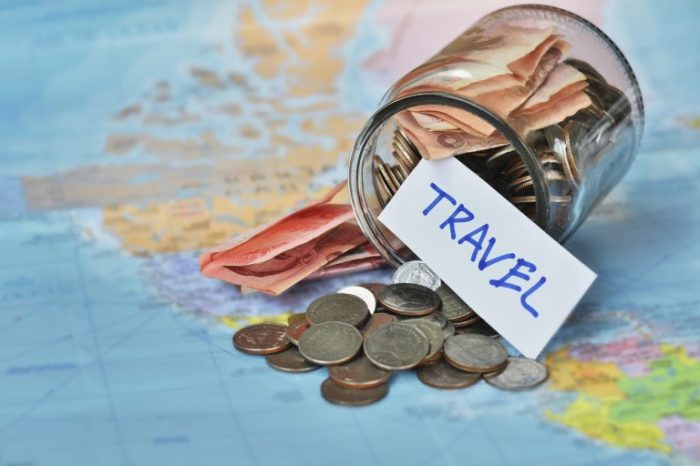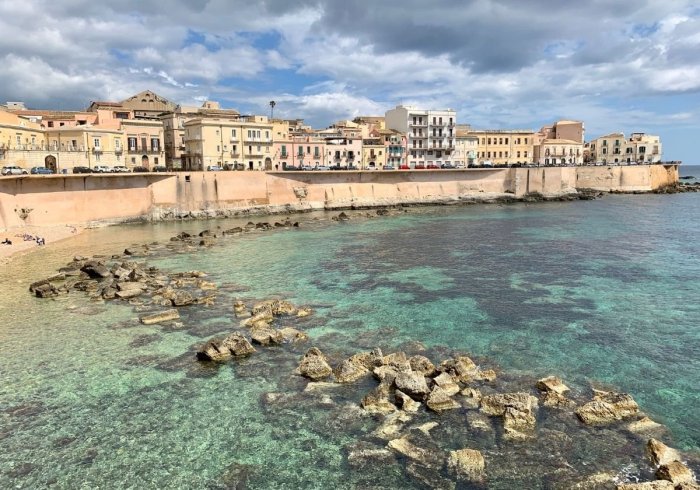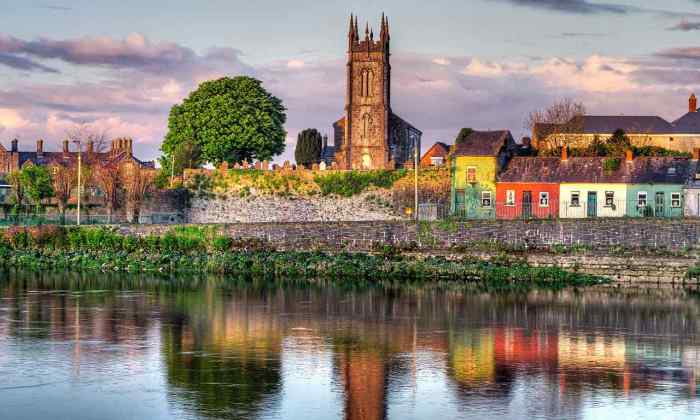Top 10 Places To Visit In Corsica
Top 10 Places To Visit in Corsica: Imagine crystal-clear waters, rugged mountains, and charming villages steeped in history – that’s Corsica, a French island in the Mediterranean Sea, beckoning adventurers and wanderers alike. From the dramatic Bonifacio cliffs to the wild beauty of the Agriates Desert, Corsica offers a diverse range of experiences for every type of traveler.
This island is more than just stunning scenery; it boasts a rich culture, unique cuisine, and welcoming locals who are passionate about their heritage. So, pack your bags and get ready to explore the hidden gems of Corsica, a destination that promises to leave you breathless.
Corsica
The Island of Beauty
The Island of Beauty
Corsica, a Mediterranean island nestled in the heart of the Tyrrhenian Sea, is a place where history, culture, and breathtaking landscapes intertwine to create an unparalleled travel experience. Steeped in a rich past, Corsica boasts a unique identity forged by its strategic location, a blend of Italian and French influences, and a proud spirit that resonates through its people and traditions.
Corsica is a beautiful island with stunning beaches, rugged mountains, and charming villages. You could easily spend weeks exploring all it has to offer. If you’re looking for a different kind of European adventure, though, you might want to check out Top 10 Places To Visit in The Netherlands.
The Netherlands is known for its canals, windmills, and charming towns. But Corsica has its own unique charm, with a rich history and culture that’s waiting to be discovered.
Beyond its captivating history, Corsica is a paradise for nature enthusiasts. From rugged mountain ranges to pristine beaches, the island offers a diverse array of landscapes and experiences, making it an ideal destination for adventurous travelers and those seeking tranquility.
The Diverse Landscapes of Corsica
Corsica’s diverse landscapes are a testament to its geological history and its unique position in the Mediterranean. The island’s interior is dominated by the rugged peaks of the Monte Cinto massif, reaching heights of over 2,700 meters (8,858 feet). This mountainous terrain, carved by ancient glaciers, is characterized by deep gorges, cascading waterfalls, and dense forests, offering opportunities for hiking, rock climbing, and exploring the island’s natural beauty.
The Majestic Mountains
Corsica’s mountains are a sight to behold, rising dramatically from the Mediterranean Sea, their peaks piercing the sky. They are a testament to the island’s wild beauty and offer an array of experiences for adventurous travelers.The island’s mountainous terrain is characterized by its towering peaks, deep gorges, and lush forests, creating a diverse and breathtaking landscape.
Corsica’s highest peak, Monte Cinto, stands tall at 2,706 meters (8,878 feet), offering a challenging yet rewarding climb for experienced hikers.
The Highest Peaks
The island’s mountain ranges are home to a number of impressive peaks, each with its unique character and charm.
- Monte Cinto: The highest peak in Corsica, Monte Cinto is a popular destination for hikers and climbers. It offers stunning panoramic views of the surrounding landscape, including the Mediterranean Sea and the island’s western coast. The ascent to the summit is challenging, requiring a good level of fitness and experience, but the rewards are well worth the effort.
- Monte Rotondo: Standing at 2,622 meters (8,602 feet), Monte Rotondo is the second-highest peak in Corsica. It’s known for its rugged beauty and the challenging trails leading to its summit. The views from the top are breathtaking, offering a glimpse of the island’s diverse landscape.
- Monte d’Oro: Located in the heart of the island, Monte d’Oro stands at 2,389 meters (7,838 feet). It is known for its distinctive golden color, which is particularly striking at sunset. The trails leading to the summit are less challenging than those to Monte Cinto and Monte Rotondo, making it a good option for less experienced hikers.
Hiking Trails
Corsica’s mountains offer a vast network of hiking trails, catering to all levels of experience.
- The GR20: Known as one of the most challenging long-distance hiking trails in Europe, the GR20 traverses the island’s central mountain range, offering breathtaking views and a chance to experience Corsica’s wild beauty. It is a 180-kilometer (112-mile) trail that takes about 15 days to complete.
- The Mare a Mare Nord: This 165-kilometer (103-mile) trail stretches across the island’s northern region, offering a more accessible alternative to the GR20. It passes through picturesque villages, charming forests, and dramatic coastal landscapes. It takes about 10 days to complete.
- The Mare a Mare Sud: This 145-kilometer (90-mile) trail winds its way through the island’s southern region, offering stunning views of the Mediterranean Sea and the island’s rugged coastline. It takes about 8 days to complete.
Flora and Fauna
Corsica’s mountainous regions are home to a rich and diverse array of flora and fauna.
Corsica is known for its stunning beaches, dramatic mountains, and charming villages. You can hike through the Calanches de Piana, explore the historic city of Bonifacio, or relax on the white sand beaches of Porto-Vecchio. If you’re looking for a more adventurous trip, you could check out the Top 10 Places To Visit in Tanzania – they’ve got amazing wildlife and some of the most stunning landscapes in the world.
But if you’re looking for a more laid-back vibe, Corsica is the place to be.
- Corsican Pine: This unique species of pine is endemic to Corsica and is a symbol of the island’s wild beauty. It thrives in the high altitudes and is known for its distinctive shape and fragrant needles.
- Corsican Nutcracker: This colorful bird is a common sight in the island’s mountain forests. It is known for its distinctive call and its ability to crack open pine cones to extract the seeds.
- Corsican Red Deer: This majestic animal is a rare and endangered species that is found only in Corsica. It is a symbol of the island’s pristine wilderness and is a prized sight for wildlife enthusiasts.
Coastal Wonders
Corsica’s coastline is a breathtaking tapestry of sandy beaches, rugged cliffs, and secluded coves. The Mediterranean Sea laps gently against the shore, inviting you to explore its turquoise depths. From the bustling beaches of Ajaccio to the hidden gems of the Cap Corse, the island offers a diverse range of coastal experiences.
Beach Destinations
The island boasts a plethora of beaches, each with its own unique charm. Here are some of the most popular beach destinations:
| Beach | Location | Unique Features |
|---|---|---|
| Saleccia Beach | North Corsica | White sand, crystal-clear waters, surrounded by pine forests |
| Palombaggia Beach | South Corsica | Pinkish sand, clear turquoise waters, granite rocks |
| Rondinara Beach | South Corsica | Horseshoe-shaped bay, white sand, sheltered waters |
| Santa Giulia Beach | South Corsica | Fine sand, shallow waters, perfect for families |
Water Activities
Corsica’s waters are a playground for water enthusiasts. Whether you prefer to relax on the sand or dive into the depths, there’s something for everyone.
“Corsica’s coastline is a paradise for water sports.”
- Swimming: The clear, warm waters of the Mediterranean are perfect for a refreshing swim.
- Snorkeling: Discover a vibrant underwater world teeming with colorful fish and marine life.
- Diving: Explore shipwrecks, coral reefs, and underwater caves.
- Sailing: The island is a popular destination for sailing, offering stunning views and refreshing sea breezes.
- Kayaking: Explore secluded coves and hidden beaches from a different perspective.
Charming Towns and Villages
Corsica’s beauty extends beyond its dramatic mountains and sparkling coastline. The island is dotted with charming towns and villages, each with its unique character and allure. These historic settlements offer a glimpse into the island’s rich history, vibrant culture, and captivating landscapes.
Corsican Towns and Villages: A Tapestry of Culture and History
Corsica’s towns and villages are a testament to the island’s diverse heritage, showcasing a blend of traditional architecture, local customs, and captivating scenery. These settlements are a window into the island’s past, offering a glimpse into its rich history and vibrant culture.
A Glimpse into the Captivating Towns and Villages of Corsica
- Bonifacio: Perched on dramatic white cliffs overlooking the Mediterranean Sea, Bonifacio is a captivating town known for its medieval architecture, historic fortifications, and stunning natural beauty. The town’s narrow streets wind through a maze of houses, churches, and shops, leading to breathtaking views of the turquoise waters below.
The citadel, a fortified complex built in the 9th century, offers panoramic views of the coastline and the surrounding islands.
- Corte: Nestled in the heart of the island’s mountainous interior, Corte is a historic town that was once the capital of the Kingdom of Corsica. Known as the “Capital of Corsica”, this town exudes a distinct charm, blending history, culture, and natural beauty.
Its historic center is characterized by cobblestone streets, traditional stone houses, and a majestic citadel overlooking the town. Corte is a hub for outdoor activities, with hiking trails leading to scenic viewpoints and nearby lakes.
- Ajaccio: Situated on the southwestern coast, Ajaccio is the largest city in Corsica and the birthplace of Napoleon Bonaparte. The city boasts a vibrant cultural scene, with museums, art galleries, and theaters. Ajaccio is known for its charming harbor, lined with cafes and restaurants, and its beautiful beaches.
The city’s historic center is home to the Napoleon Bonaparte Museum, which showcases artifacts and documents related to the famous emperor’s life.
- Sartène: Perched on a hilltop overlooking the Valinco Valley, Sartène is a picturesque town known for its traditional Corsican architecture and its authentic atmosphere. This town’s historic center is a labyrinth of narrow streets, lined with houses built of stone and wood.
The town’s main square, Place de la Liberté, is a lively hub for local life, with cafes, restaurants, and shops. Sartène is also known for its vibrant market, where locals gather to sell fresh produce, local crafts, and regional delicacies.
- Calvi: Located on the northwestern coast, Calvi is a charming town known for its beautiful harbor, historic citadel, and stunning beaches. The town’s citadel, a fortified complex built in the 13th century, offers panoramic views of the coastline and the surrounding mountains.
Calvi is a popular destination for sailing and water sports. The town’s beaches are known for their clear turquoise waters and soft white sand.
A Glimpse into the Essence of Corsican Towns and Villages
| Town/Village | Main Attractions |
|---|---|
| Bonifacio | Medieval architecture, historic fortifications, stunning natural beauty, Citadel, turquoise waters |
| Corte | Historic center, cobblestone streets, traditional stone houses, majestic citadel, hiking trails, scenic viewpoints |
| Ajaccio | Charming harbor, beautiful beaches, historic center, Napoleon Bonaparte Museum, vibrant cultural scene |
| Sartène | Traditional Corsican architecture, authentic atmosphere, historic center, Place de la Liberté, vibrant market |
| Calvi | Beautiful harbor, historic citadel, stunning beaches, panoramic views, sailing and water sports |
Cultural Immersion
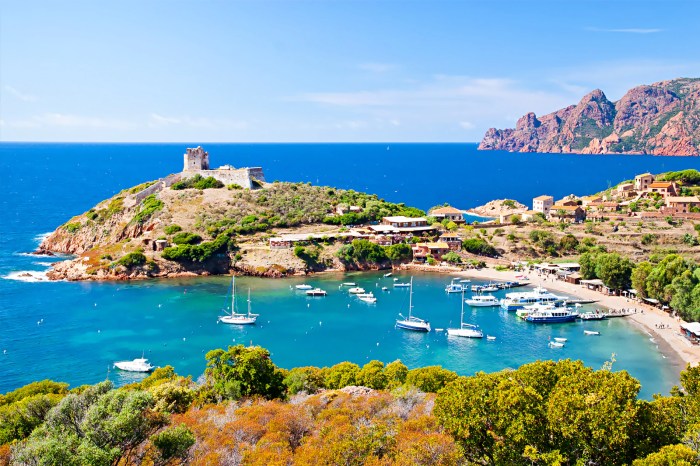
Corsica’s unique culture is a tapestry woven from its rich history, diverse influences, and the island’s natural beauty. Experience the traditions, music, and cuisine that make Corsica a truly special destination.
Corsican Traditions
Corsican traditions are deeply rooted in the island’s history and its connection to the land. Many traditions are centered around family, community, and the preservation of local customs.
- Polyphonic Singing:Corsican polyphonic singing, known as “Cantu in Paghjella,” is a UNESCO Intangible Cultural Heritage. This unique style of singing features three or more voices singing in harmony, creating a powerful and evocative sound. The songs often tell stories of love, loss, and the island’s history.
- Traditional Crafts:Corsican crafts are a testament to the island’s artistry and heritage. From hand-woven tapestries and ceramics to leather goods and woodworking, traditional crafts are a reflection of the island’s cultural identity. Local markets and workshops offer opportunities to experience and purchase these handcrafted treasures.
- Festivals and Events:Corsica celebrates its heritage through numerous festivals and events throughout the year. These events offer a chance to experience traditional music, dance, food, and crafts, immersing visitors in the island’s vibrant culture. Some notable festivals include the “Festività di a Musica Corsa” (Corsican Music Festival) and the “Festa di u Pani” (Bread Festival).
Corsican Music
Corsican music is a rich and diverse genre, influenced by the island’s history and geography. Traditional instruments like the “cetera” (a type of lute) and the “pipa” (a type of flute) are often featured in folk music. Contemporary Corsican artists are blending traditional sounds with modern influences, creating a vibrant and innovative musical scene.
“Corsican music is a reflection of the island’s soul, its passion, and its resilience.”
Corsican Cuisine
Corsican cuisine is a celebration of the island’s fresh ingredients and culinary traditions. The island’s fertile land and abundant coastline provide a bounty of produce, seafood, and meat. Corsican dishes often feature simple ingredients, prepared with care and attention to detail.
- Charcuterie:Corsican charcuterie is renowned for its quality and flavor. From “prisuttu” (ham) to “coppa” (cured pork shoulder), these cured meats are essential components of Corsican cuisine. They are often served as part of a traditional “antipasti” platter.
- Cheese:Corsican cheese is a true culinary delight. From the creamy “brocciu” (fresh goat or sheep cheese) to the pungent “cacciu” (aged sheep cheese), Corsican cheeses offer a range of flavors and textures. They are often enjoyed as part of a cheese platter or used in traditional dishes.
- Seafood:The island’s coastline provides an abundance of fresh seafood. Popular dishes include “soupe de poisson” (fish soup), “bouillabaisse” (Provençal fish stew), and grilled seafood. Corsican seafood is renowned for its freshness and flavor.
The Bonifacio Cliffs
Imagine a dramatic landscape of sheer white limestone cliffs plunging into the turquoise waters of the Mediterranean Sea. This is the breathtaking sight that awaits you at Bonifacio, a town perched on the southern tip of Corsica. The Bonifacio Cliffs, rising up to 100 meters high, are a geological marvel and a must-see destination for any visitor to the island.The cliffs were formed over millions of years by the erosion of limestone rock by the relentless forces of wind and water.
The unique white color of the cliffs is due to the high concentration of calcium carbonate in the limestone.
Exploring the Cliffs
The Bonifacio Cliffs offer a variety of ways to experience their grandeur.
- Boat Tours:One of the most popular ways to explore the cliffs is by taking a boat tour. These tours offer stunning views of the cliffs from the water, allowing you to see the dramatic rock formations and hidden coves up close.
Corsica is a gorgeous island with so many cool places to explore, from the rugged mountains to the crystal-clear beaches. It’s definitely a place you should put on your travel bucket list. If you’re looking for another island paradise, check out Top 10 Places To Visit in Crete – it’s got ancient ruins, stunning beaches, and a rich history that’s just as interesting as Corsica’s.
Both islands are perfect for a relaxing vacation with plenty of adventures to be had.
Some tours even include a stop at the Grotte Smeralda, a beautiful sea cave with shimmering turquoise waters.
- Hiking Trails:For the more adventurous, there are several hiking trails that lead to the top of the cliffs. The most popular trail is the Sentier des Douaniers, which follows the coastline and offers panoramic views of the cliffs and the surrounding sea.
The Scandola Nature Reserve
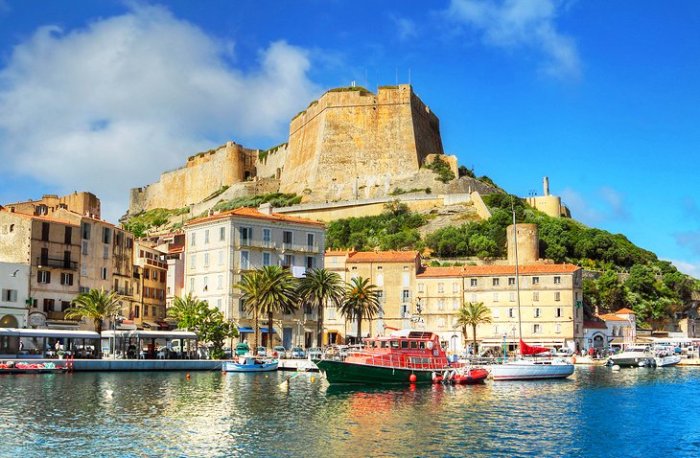
A haven for biodiversity, the Scandola Nature Reserve, located on the northwestern tip of Corsica, is a UNESCO World Heritage Site. This stunning landscape, characterized by dramatic red cliffs, secluded coves, and crystal-clear waters, is home to a unique and diverse ecosystem.
Ecological Importance
The Scandola Nature Reserve is a critical habitat for numerous species of flora and fauna. Its unique geological formations and diverse microclimates support a rich tapestry of life. The reserve’s rugged terrain and pristine waters provide sanctuary for a wide range of marine life, including dolphins, whales, and various species of fish.
The rocky cliffs and coastal areas are also vital nesting grounds for seabirds. The reserve plays a crucial role in protecting these fragile ecosystems and ensuring their long-term survival.
Flora and Fauna
The Scandola Nature Reserve is a treasure trove of biodiversity. The reserve is home to over 150 species of plants, including rare and endemic species like the Corsican Lily and the Mediterranean Fan Palm. The diverse flora provides a rich food source for the reserve’s abundant fauna.
The reserve’s marine life is equally impressive, with over 200 species of fish, including the Mediterranean Moray Eel and the Red Snapper. The waters surrounding the reserve are also home to various species of sea turtles, dolphins, and whales.
Boat Tours and Excursions, Top 10 Places To Visit in Corsica
Exploring the Scandola Nature Reserve is an unforgettable experience. The reserve is accessible only by boat, and several tour operators offer guided excursions. These tours provide a unique opportunity to witness the reserve’s breathtaking beauty up close. Visitors can marvel at the dramatic cliffs, explore hidden coves, and observe the diverse marine life that inhabits the reserve’s waters.
Many tour operators offer snorkeling and diving excursions, allowing visitors to experience the underwater world of Scandola.
The Calanches de Piana
The Calanches de Piana are a breathtaking natural wonder, renowned for their dramatic, sculpted rock formations that rise from the sea. Located on the west coast of Corsica, this UNESCO World Heritage site is a must-see for any visitor to the island.
Geological Formations and Unique Beauty
The Calanches de Piana are a result of millions of years of geological processes, including volcanic eruptions and erosion. The distinctive red, orange, and pink hues of the rocks are a consequence of the iron oxide content, which gives them a vibrant and captivating appearance.
The erosion has carved out dramatic shapes, creating a landscape of towering pinnacles, jagged cliffs, and sculpted canyons. The Calanches are a photographer’s dream, offering a variety of perspectives and angles to capture the beauty of this unique landscape.
Hiking Trails and Viewpoints
The Calanches de Piana offer numerous hiking trails that wind through the rock formations, providing spectacular views of the coastline and the Mediterranean Sea. Some popular trails include:
- The Sentier des Crêtes: This trail offers panoramic views of the Calanches, the Gulf of Porto, and the surrounding mountains.
- The Sentier du Littoral: This coastal trail provides stunning views of the sea and the rocky cliffs.
- The Sentier de la Citadelle: This trail leads to the ruins of a Genoese citadel, offering historical insights and panoramic views of the Calanches.
Different Perspectives and Vantage Points
The Calanches de Piana offer a variety of perspectives and vantage points to experience their beauty. Here’s a table showcasing some of the best viewpoints:
| Viewpoint | Description | Best Time to Visit |
|---|---|---|
| Piana Village | Offers a panoramic view of the Calanches from a distance. | Anytime, but particularly beautiful at sunset. |
| The Sentier des Crêtes | Provides close-up views of the rock formations from a high vantage point. | Morning or late afternoon for optimal lighting. |
| The Sentier du Littoral | Offers a unique perspective of the Calanches from the coastline. | Anytime, but particularly beautiful on a clear day. |
| The Citadelle Ruins | Provides a historical context for the Calanches, with panoramic views from the top. | Anytime, but particularly interesting for history buffs. |
The Agriates Desert: Top 10 Places To Visit In Corsica
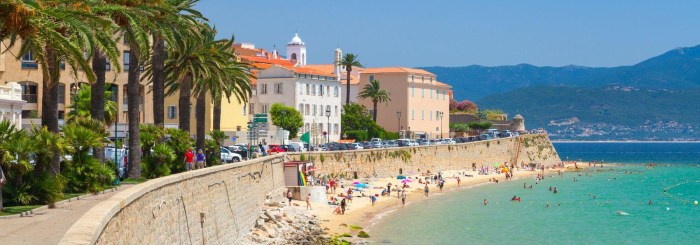
The Agriates Desert, located in the northern part of Corsica, is a unique and wild landscape unlike any other on the island. Its rugged beauty, characterized by its stark, rocky terrain, scrubland, and dramatic coastline, is a testament to the untamed nature of this region.
The desert is a haven for those seeking an escape from the ordinary, offering breathtaking views, challenging hiking trails, and opportunities for off-road exploration.
History and Cultural Significance
The Agriates Desert has a rich history, dating back to ancient times. The region was once inhabited by the ancient Ligurians, who left behind traces of their culture in the form of dolmens and other megalithic structures. The desert also played a significant role in the island’s defense, as its rugged terrain made it difficult for invaders to penetrate.
Over the centuries, the region has been shaped by the forces of nature and human activity, resulting in a unique blend of natural beauty and cultural heritage.
Hiking Trails and Off-Road Exploration
The Agriates Desert is a paradise for hikers and off-road enthusiasts. Numerous trails wind through the desert, offering varying levels of difficulty and stunning views. For those seeking a challenging hike, the Sentiero dei Pastori (Shepherd’s Trail) is a popular option, leading through the heart of the desert and offering panoramic views of the coastline.
The desert is also home to several abandoned villages and shepherd’s huts, which offer a glimpse into the region’s past.Off-road exploration is another popular activity in the Agriates Desert. The region’s unpaved roads and rugged terrain make it an ideal destination for four-wheel drive vehicles and mountain bikes.
However, it’s important to note that off-road driving is strictly regulated, and permits are required.
Corsican Gastronomy
Corsican cuisine is a delightful blend of Mediterranean flavors and influences, showcasing the island’s rich agricultural heritage and unique culinary traditions. From hearty stews to fresh seafood dishes, Corsican gastronomy offers a tantalizing journey for the senses.
The Influence of Mediterranean Flavors
Corsican cuisine draws heavily on the flavors of the Mediterranean, incorporating fresh herbs, aromatic spices, and the bounty of the sea. The use of olive oil, garlic, onions, and tomatoes is prevalent in many dishes, creating a vibrant and flavorful base.
The island’s unique microclimate and fertile soil produce an abundance of fresh produce, including citrus fruits, olives, grapes, and vegetables, which are integral to the local culinary traditions.
Traditional Dishes and Regional Specialties
Corsican cuisine boasts a rich tapestry of traditional dishes and regional specialties. Here are some of the must-try dishes:
Must-Try Corsican Dishes
- Brocciu: A fresh, unripened sheep or goat cheese that is a staple in Corsican cuisine. It is used in various dishes, including the popular brocciupie ( fritelle), a savory pastry filled with brocciu, herbs, and often a touch of sugar.
- Charcuterie: Corsican charcuterie is renowned for its quality and unique flavors. Prisuttu(cured ham) is a prized delicacy, characterized by its intense flavor and distinctive aroma. Other charcuterie specialties include coppa(cured pork shoulder) and figatellu(pork sausage with herbs and liver).
- Seafood: Corsica’s coastline provides an abundance of fresh seafood. Bouillabaisse, a traditional fish stew, is a popular dish, featuring a medley of fish, shellfish, and vegetables simmered in a flavorful broth. Other seafood specialties include soupe de poisson(fish soup) and grilled octopus.
- Lamb: Lamb is a popular meat in Corsican cuisine, often roasted or grilled with herbs and spices. Agneau de lait(milk-fed lamb) is a particularly tender and flavorful variety.
- Chestnut Dishes: Chestnuts are a significant part of Corsican culture and cuisine. The island is known for its chestnut forests, which produce an abundance of this versatile ingredient. Castagnaccio, a chestnut flour cake, is a traditional dessert.
- Wine: Corsica produces a range of wines, both red and white, from its vineyards. The island’s unique terroir and microclimate contribute to the distinctive character of Corsican wines. Popular varieties include Niellucciu (red) and Vermentinu (white).
Planning Your Trip
Corsica offers a unique and captivating travel experience, but planning your trip requires considering various factors to ensure a smooth and enjoyable journey. From transportation options to accommodation choices and budget considerations, understanding the nuances of traveling to Corsica will help you make the most of your time on this beautiful island.
Getting to Corsica
Corsica is accessible by air and sea. The main airport is Figari Sud Corse Airport (FIG), which receives flights from major European cities. Calvi Sainte-Catherine Airport (CLY) offers additional flight options, particularly during the peak season. For those seeking a scenic and relaxing journey, ferries operate regularly from mainland France, Italy, and other Mediterranean destinations.
Navigating the Island
Corsica’s rugged terrain and winding roads present unique challenges for transportation. Hiring a car offers the greatest flexibility for exploring the island’s diverse landscapes and hidden gems. However, be prepared for narrow, mountainous roads and limited public transportation in some areas.
Accommodation Options
Corsica offers a wide range of accommodation options, catering to different budgets and preferences. From charming guesthouses and family-run hotels to luxurious resorts and campsites, finding the perfect place to stay is a matter of personal preference.
Budget Considerations
Corsica’s prices can be slightly higher than mainland France, especially during peak season.
Best Time to Visit
The best time to visit Corsica depends on your interests and preferences. Spring (April-May) and autumn (September-October) offer pleasant weather with fewer crowds and more affordable prices. Summer (June-August) brings warm weather and ideal conditions for swimming and water activities, but expect higher prices and larger crowds.
For hiking enthusiasts, spring and autumn provide ideal conditions, while winter offers opportunities for skiing in the mountains.
Closure
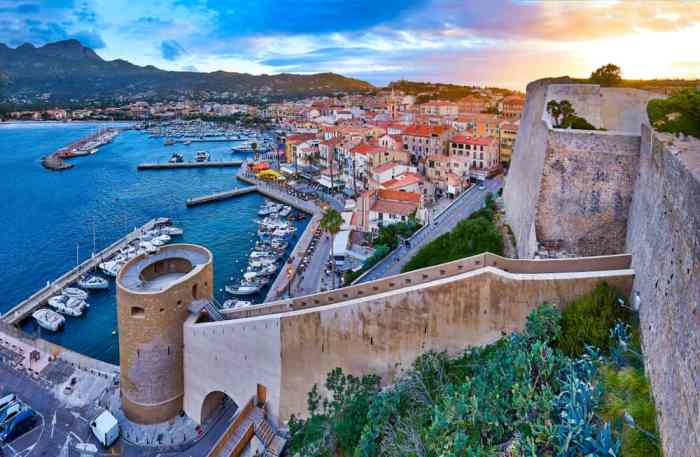
As you wander through the cobblestone streets of charming towns, hike through breathtaking mountain trails, and soak up the sun on pristine beaches, Corsica will leave an indelible mark on your soul. Whether you’re seeking adventure, relaxation, or cultural immersion, this island offers a perfect blend of natural beauty and human spirit, promising an unforgettable journey.
So, what are you waiting for? Start planning your Corsican adventure today!
FAQ Compilation
What’s the best time to visit Corsica?
The best time to visit Corsica depends on your interests. For warm weather and swimming, June to September is ideal. If you prefer cooler temperatures and fewer crowds, spring (April-May) or autumn (September-October) are great options.
How do I get around Corsica?
Corsica has a good road network, making it easy to explore by car. You can also find buses and ferries for longer distances. If you’re feeling adventurous, consider hiking or biking!
What are some must-try Corsican dishes?
Don’t miss the opportunity to try traditional dishes like “maquis” (wild herbs), “brocciu” (fresh goat cheese), and “figatelli” (pork sausage). And, of course, no Corsican meal is complete without a glass of local wine!

